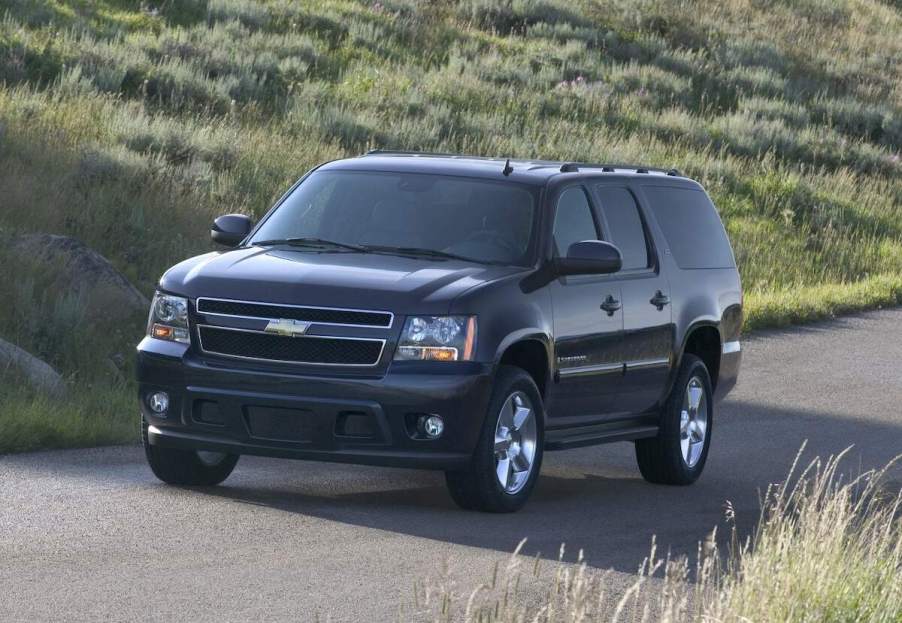
5 of the Worst Chevy Suburban Model Years, According to CarComplaints
First released in 1935, the Chevy Suburban has been a go-to utility vehicle for many Americans. The behemoth full-size SUV offers multiple seat configuration options, excellent engine performance and towing capacity, and rear- and all-wheel drive (AWD) systems. The car is now in its twelfth generation, the AWD-only, off-road-centric Z71 trim.
Despite its accolades throughout its 87 years on the market, some model years have been plagued by more maintenance issues than others, as chronicled by myriad complaints by owners. These issues significantly dented the Suburban’s reliability in these model years, requiring owners to visit repair centers frequently. So, what are the very worst Chevy Suburban model years you might want to avoid when car shopping?
1. The 2001 and 2007 Chevy Suburban

We start with the 2001 Suburban, which made its market debut with two powerful Vortec V8 engines, a cavernous interior, and a nine-passenger capacity. Even with improvements to the powertrain, the self-proclaimed “king of the full-size, body-on-frame sports-utility” segment had many complaints, particularly regarding transmission and fuel pump problems.
As noted on Car Complaints, the transmission failed while driving, at an average mileage of 92,850. As a result, most 2001 Suburban owners had to replace it with a new transmission, which cost $1,850. Another commonly reported issue with the 2001 Suburban was fuel pump failure, typically at a relatively lower mileage of 88,750 miles. While some owners solved the issue through dealer-supported recalls, most had to replace the fuel pump, and that set them back $900 in repair costs.
In 2007, one of the worst model years of the Chevy Suburban as it ranks the highest with the most reported problems, a total of 345 complaints. The most common was transmission failure, usually at an average mileage of 83,000 miles with repair costs of $2,900.
Other issues included engine failure and shutdown, which owners experienced after hitting the 100,000-mile mark. Fixing them required $5,800 and $6,500, respectively, not to mention you also have to sponsor the engine’s enormous appetite for fuel, as Car and Driver put it.
2. The 2008 and 2009 Chevy Suburban
The Suburban’s tenth generation got off to a bad start with the 2007 model, so the automaker moved quickly to release a better version. While the 2008 edition was a significant upgrade, it also had flaws, particularly with the engine. Owners reported excessive oil consumption, typically at 81,700 miles on the odometer; repairs involved replacing the engine, oil pressure sensor, pistons, and rings or adjusting the piston compression height. Any of these repairs usually cost $3,480.
Another engine problem flagged by Car Complaints is the sudden loss of oil pressure, typically at an average mileage of 143,950 miles. In most cases, the solution is to replace the engine, which costs $4,170. Complaints also arose about the check engine light on at an average mileage of 118,300 miles. The most common solutions included replacing the evaporation canister vent and harness for $2,180.
While the 2007 Suburban had the most overall complaints, the 2009 model year was worse, according to Car Complaints. It’s because of factors such as high repair costs and a variety of issues at relatively low mileage. For instance, excessive oil consumption and engine oil usage with no leaks are problems occurring at 55,000 and 98,000 miles, respectively. The transmission also fails after 124,000 miles on the odometer, requiring a transmission rebuild—a budget of $3,860.
3. The 2015 Chevy Suburban
Chevy redesigned the Suburban for the 2015 model year, introducing three rows of spacious, comfy seats, generous cargo space, and a powerful 325-hp 5.3-liter V8 engine mated with a six-speed automatic transmission. The only problem with the car is that: like the 2009 Suburban, the 2015 model also suffered wide-ranging failures at relatively low mileage.
For example, many drivers reported that the brakes stopped working after reaching 58,000 miles on the odometer. Another issue was defective paint on the hood and roof became visible at 64,000 mileage, while the AC stopped working, usually after the car had run 66,000 miles. Getting these issues fixed costs $1,000 to $1,200 per repair.
From the above information, you now know the worst model years of the Chevy Suburban. The overall common problems involve engine-related issues. The 2007 Suburban has the most complaints overall, but the 2009 model is even worse, thanks to the high repair costs and maintenance problems at relatively lower mileage. However, if you buy a Suburban from other model years, you’ll enjoy the model’s long-standing advantage—higher mileage.


